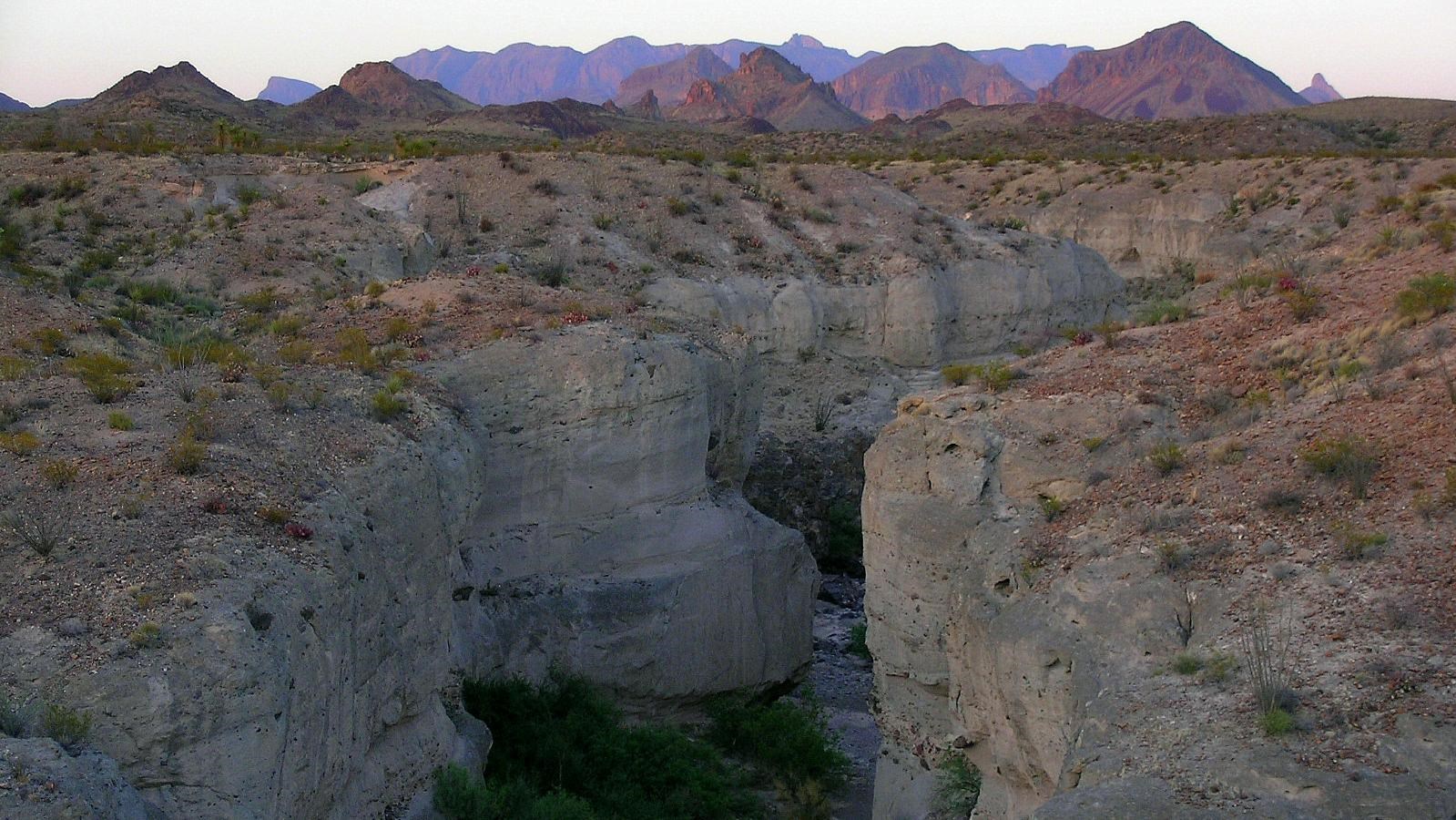Last updated: March 8, 2024
Place
Tuff Canyon

NPS/B. Trester
Parking - Auto, Trailhead
Trail Information
Roundtrip Distance: 0.5 mile (1.2 km) to 3 viewing platforms
Average Hiking Time: 20 minutes
Dogs and other pets are not allowed on any trails in the park.
Tuff Canyon provides a glimpse into the violent volcanic past of Big Bend. Here, Blue Creek, fed by rains in the distant Chisos Mountains, has carved a spectacular canyon through layers of volcanic tuff and basalt.
30 million years ago, ash and particles ejected from a nearby volcanic vent accumulated here while still glowing hot. Heat and pressure welded the layers of light ash into a material called tuff.
Tuff Canyon's three overlooks offer great views into the canyon. There are two short pathways leading out to three viewing platforms that allow for safe viewing into the canyon.
Look for pebbles, rocks, and even large boulders embedded in the canyon walls. These materials were also once airborne before landing in the accumulating hot ash. Older darker basaltic rock on the canyon floor was exposed as the canyon was carved through the layers of tuff.
During the rainy season the canyon fills with pools of water.
Accessibility
The tuff on the canyon rim is soft and erodes easily, so take care to stay away from the edges while up on top.
A paved pullout at the trailhead provides parking for about 6 vehicles.
Safety
- Be careful...steep dropoffs exist along the canyon edge. Enjoy the canyon from the observation platforms.
- Tuff Canyon experiences regular rockfalls. Report major rockfalls to a park ranger.
- Stay back from the rim. Do NOT throw objects into the canyon.
There may be hikers below.
